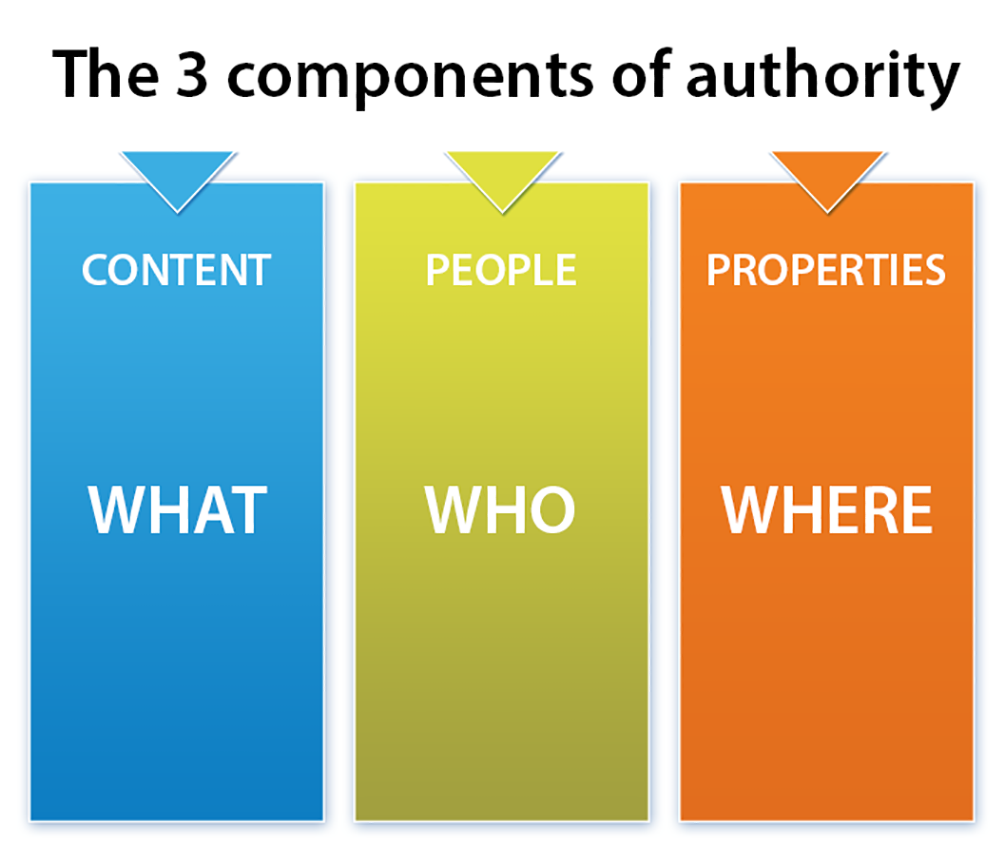How To Score for Content Authority
What this guide will teach you
Task Checklist
What is this about?
Content is ranked by authority on a 30–point scale. To do this, we score content using three categories: Who, Where, and What. Each of these categories can be given a score from 0 to 10. The total score from all three categories combined yields the total score or ranking.
The three categories are
Who is saying it
Where it is being said
What is being said
Here, we will try to explain each category as simply as possible to help you learn how to score content the right way.

Category 1: Who is saying it?
In this category, content is scored based on who is saying what. If the person talking is discussing something that has niche relevancy, is known in the industry, and is recognized as someone important in the industry, the content can get a high authority ranking in this category.
Here’s how to score in this category:
- If the person is well-known and what he’s saying is relevant, the ranking might reach as high as 9 or 10.
- If the person is only a little bit well-known, but he/she has niche relevancy, then we might score it a 7 or 8.
- If the person is not well-known at all, but he/she has niche relevancy, then we might score it a 5 or 6.
- If the person is not well-known and does not have niche relevancy, then we might score it from 2 to 4.
- If they have no real authority at all, and are just talking about something that’s not relevant, then it might get a score of 0 or 1.
The basic idea here is that the person saying it needs to possess some level of importance. That usually happens when the person is important in the niche. If the person appears in major news outlets and publications, then we can say that the person has real authority.
Category 2: Where is it being said?
In this category, we look at where the content is being said. If the content is appearing in major publications such as Forbes or the New York Times, it can earn a high score because they’re high authority sites. To get an even higher authority ranking, content must be featured, again, in high authority sites and also be talked about in a niche relevant context where their content would be highlighted or discussed.
- A good example of a high authority ranking is if, for example, an aquarium company’s content is featured in a magazine about fish tanks and the magazine is considered the most niche relevant publication, then the ranking would probably be a 9 or a 10 because of the high relevancy.
- On the other hand, if, for example, the content comes from a random personal blog and it’s appearing in places that are not well-known, aren’t really read by visitors, and have low niche relevancy, the ranking would be at the lowest end of the 10-point scale.
Category 3: What is being said?
In this last category, we’re checking the content for what is being said. We have to ask ourselves, is it checklist-proven? Is the expertise being demonstrated, or is the content being randomly discussed?
- The kind of content that ranks high here is content that contains checklists or proven processes. A good example would be a guide that lists a process for a task in a step-by-step fashion that would include expert tips and tools that can help execute the task more efficiently. This type of content would rank a 9 or a 10.
- On the other hand, content that would probably rank low here would be content that demonstrates general expertise. It may be considered good, but it doesn’t offer proof that it actually works. That would deserve a 4 or 5 ranking.
- On the opposite side of the 10-point scale in this category, the content would get a low ranking, around 0 to 2, if the speaker is just making general statements about their industry. It’s again not a proven process, but more of a general guide.
-
Reminder
Useful examples
Examples of sites with high authority are: CNN, Forbes, Wall Street Journal, The New York Times, NBC, etc. You get the idea.
Examples of high authority niche sites are: HubSpot SalesForce, MarketingLand, Social Media Marketing World, etc.
Examples of “What” content: Detailed case studies, video walkthroughs, step-by-step guide blog posts, etc.
That's it. Good job!
Verification Checklist
The scoring/ranking must meet the following criteria:
#1. The scoring is consistent with the guidelines explained in this guide.
